By Rear Admiral Eric C. Jones, United States Coast Guard
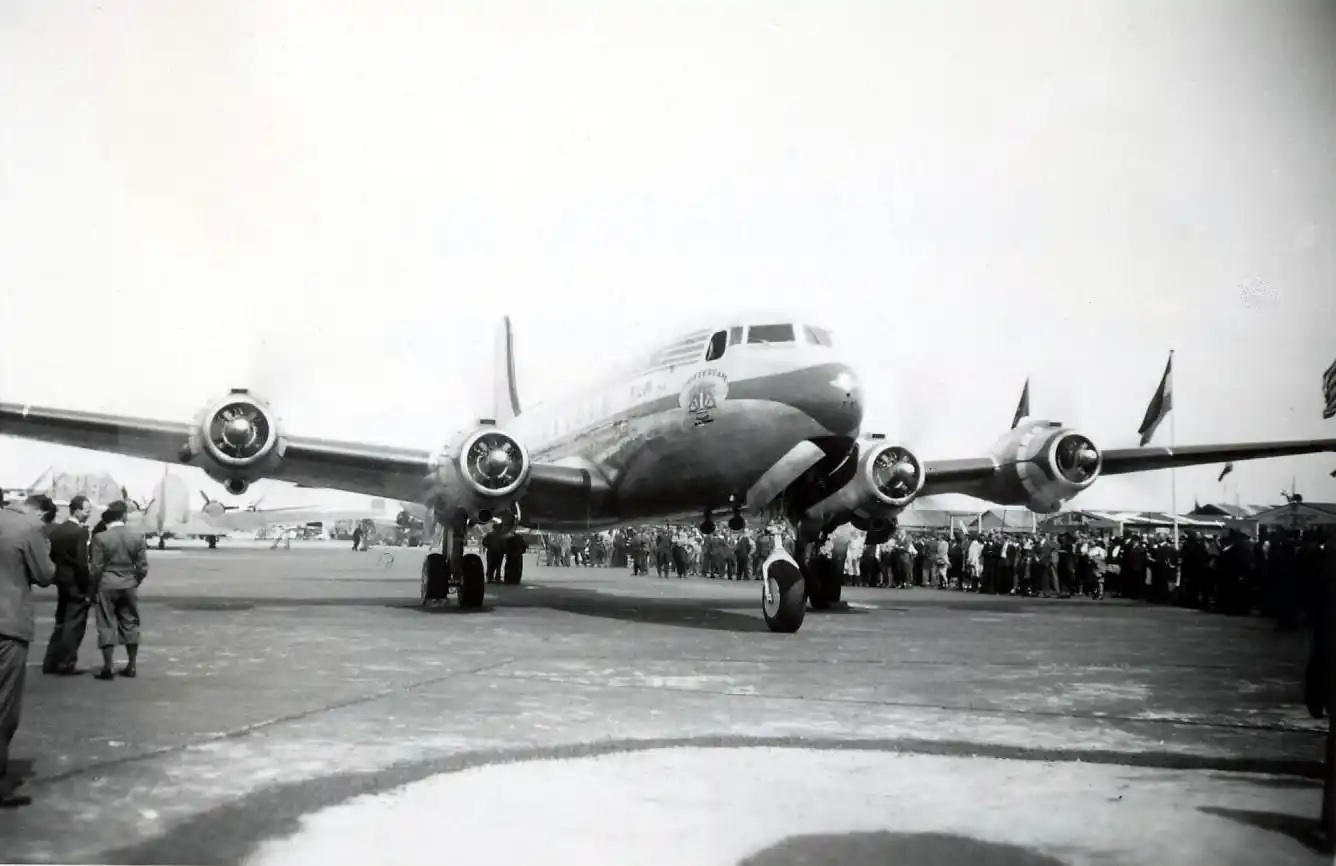 When and where was the first helicopter used to rescue civilians in distress? Believe it or not, this aviation milestone occurred shortly after World War II. And it was the Coast Guard that made it happen with support from the U.S. Air Force’s predecessor service, the U.S. Army Air Force.
When and where was the first helicopter used to rescue civilians in distress? Believe it or not, this aviation milestone occurred shortly after World War II. And it was the Coast Guard that made it happen with support from the U.S. Air Force’s predecessor service, the U.S. Army Air Force.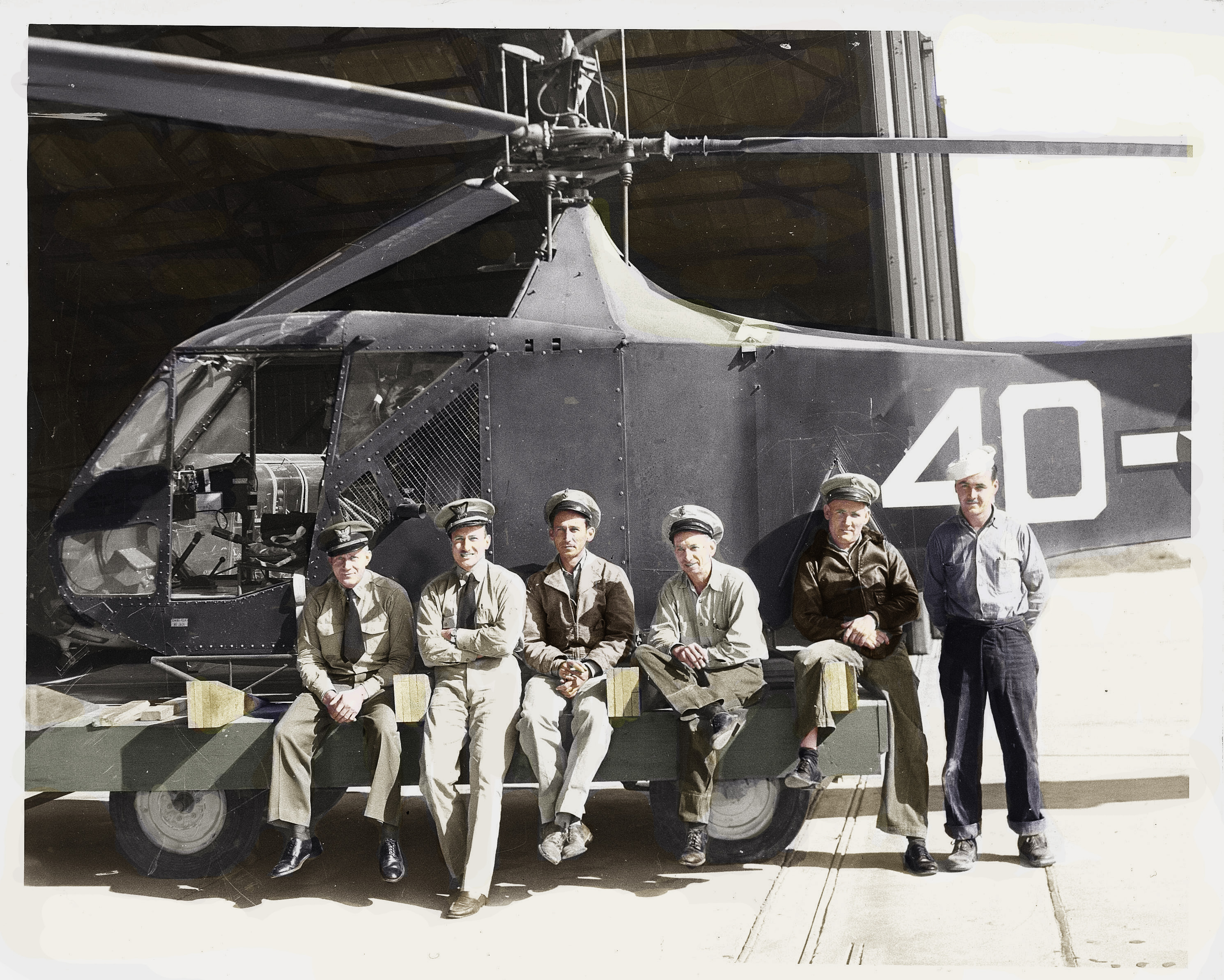
The year was 1946, and commercial trans-Atlantic flight was still in its early years. Sabena Airlines, the Belgian National Airlines, had only been flying the route for three months. In the afternoon of September 17th, one of its Douglas DC-4 “Skymasters,” call sign Oscar Oscar Charlie Baker George (OO-CBG), was flying from Brussels to New York City scheduled to arrive mid-day on the 18th, with stops for fuel in Shannon, Ireland, and Gander, Newfoundland. Again, this was during the early years of long-distance air travel, and this unpressurized SABENA airliner—with 37 passengers—had flight crew of seven for a trip spanning of over 24 hours.
Refueling in Shannon had gone smoothly, but the trip across the North Atlantic was very turbulent with icing conditions all the way across. The pilot attempted to climb to over 15,000 feet altitude to cruise above the weather but could not remain at that height due to passengers “becoming distressed”—presumably due to hypoxia. As OO-CBG approached Newfoundland, the air became very rough. After this long and turbulent leg of the journey, pilot Capt. Jean Ester faced the daunting task of locating Newfoundland Airport—as Gander International Airport was then known—in dark and overcast conditions, with a 500-foot ceiling, one-mile visibility and north-northeasterly winds gusting up to 40 knots.
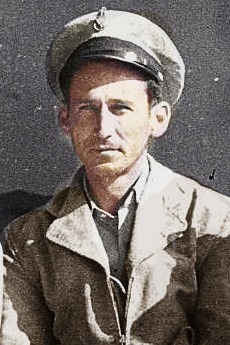
Located 25 miles from the coast in the northeastern-most region of the North America Continent, Newfoundland Airport was completed in 1938. So vital to enabling trans-Atlantic aviation, a lifeline to the Allies throughout the second World War, the facilities at Gander grew rapidly. For several years, Newfoundland Airport was the largest airport in the world, both in physical size and volume of aircraft, and this happened before the Dominion of Newfoundland became a province of Canada in 1949. Gander International Airport most recently made the news on Sept. 11, 2001, when all air traffic in the continental U.S. was halted in the wake of the terrorist attacks on the World Trade Center in Manhattan and the Pentagon, 28 airliners—with a total of 6,122 passengers and 473 crew—landed at Gander. Nearly doubling the population of this remote North American outpost, the story of the generous welcome and housing of the stranded travelers for four days is well told in Jim DeFede’s book, The Day the World Came to Town. The story was also the inspiration for the hit Broadway musical “Come from Away.”
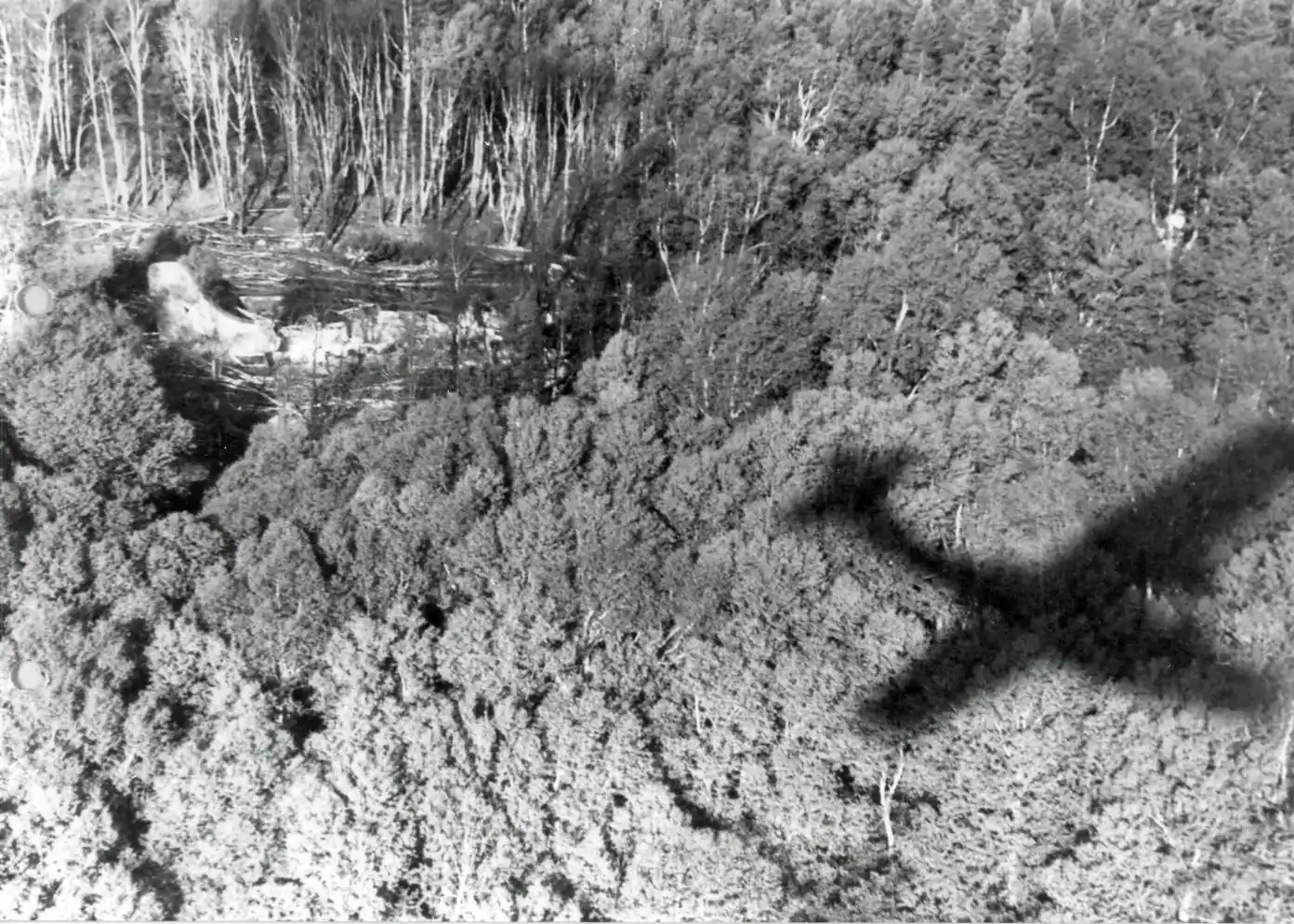
Returning to OO-CBG, the aircraft did have good radio communications with the tower at Gander as it prepared for an instrument approach landing. At the time, there were no official instrument approach procedures established for airports. Instead, each airline developed its own procedures for each airport. Sabena followed the procedures that Pan Am Airlines developed and used. As part of the set-up for the instrument approach, OO-CBG called the tower at 5:03 a.m., with the message, “High cone, 2,000 feet.” This indicated that the aircraft was directly over the Gander radio beacon range station. Procedures, however, dictated that the aircraft should have been at a minimum altitude of 4,000 feet. At 5:07 a.m., OO-CBG again radioed Gander with the message “Procedure Turn,” to warn the tower that the aircraft had completed its turn for final approach to the runway. After also receiving the barometric pressure at the airfield, no further radio transmissions were received from OO-CBG.
When the tower did not raise OO-CBG on the radio, Gander contacted nearby airports in Stephenville and Torbay in hopes that the Sabena airliner had diverted elsewhere. When it was determined that OO-CBG had not landed elsewhere, Newfoundland Airport declared an emergency and contacted the Coast Guard Air Detachment, Argentia, to search for the missing DC-4.
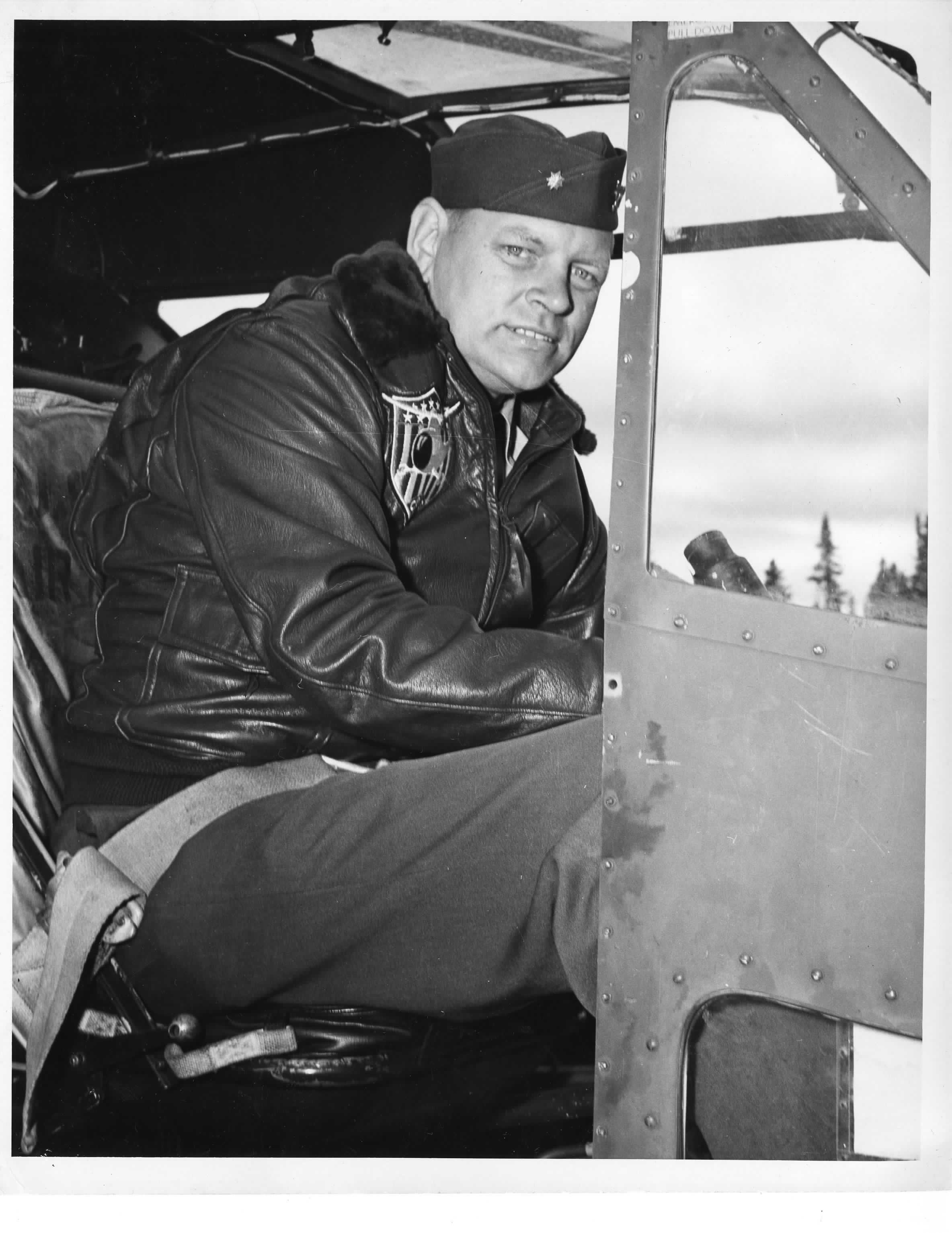
To support the International Ice Patrol mission and remote LORAN-A radio navigation stations, the Argentia Air Detachment had two former B-17G “Flying Fortresses,” designated PB-1Gs by the Coast Guard, and two PBY-5A “Catalina” amphibious aircraft. Upon receiving word of the lost Sabena airliner, the Coast Guard air crews took off to begin the search. A PB-1G began to search offshore, while the two amphibians centered their searches around Newfoundland Airport. The three aircraft searched throughout the day with no sign of OO-CBG.
As searches resumed on the morning of September 19th, the weather began to clear. Shortly before noon, a Trans World Airlines (TWA) airliner approaching Newfoundland Airport spotted a possible crash site approximately 20 miles southwest of the airport. The airliner remained in the area until one of the Coast Guard amphibians would fly to the scene. The Catalina’s crew confirmed that the wreckage was OO-CBG and that they saw survivors from the crash.
On the ground, the survivors had gone through a hellish experience and remained in great peril. In the dark and cloudy conditions in the morning of the 18th, the pilot had misjudged his height above the ground while looking for the airport. The DC-4 flew into the forest in a level-flight at about 100 knots with flaps up and landing gear retracted. The aircraft cut a swath of nearly 400 feet through the trees before finally stopping. It burst into flames with approximately seven-and-a-half hours of fuel on board. Every seat with a buckled-in passenger tore free of the passenger compartment floor and many of the passengers, still in their seats, were thrown clear of the fuselage. All told, 17 of the 37 passengers survived the crash and fire, and only one of the crew of seven, Flight Attendant Jean Rookx, was still alive. She was badly injured with two broken legs. The accident investigation showed that the navigator’s watch stopped at just after 5:12 a.m., local time. That was just over five minutes elapsed between last radio contact and the crash.
The survivors had to endure the first day on their own, as the fires burned out amidst continuing windy and drizzly conditions. The few passengers who made it through the crash with no, or only minor injuries did what they could to pull the injured and trapped from the burning wreckage. At midday on the 19th, the first help to arrive was two hunters drawn to the crash site by the TWA airliner and Coast Guard Catalina circling overhead. The hunters did what they could to comfort and warm the survivors by sharing their coats and sleeping bags, and by brewing hot tea.
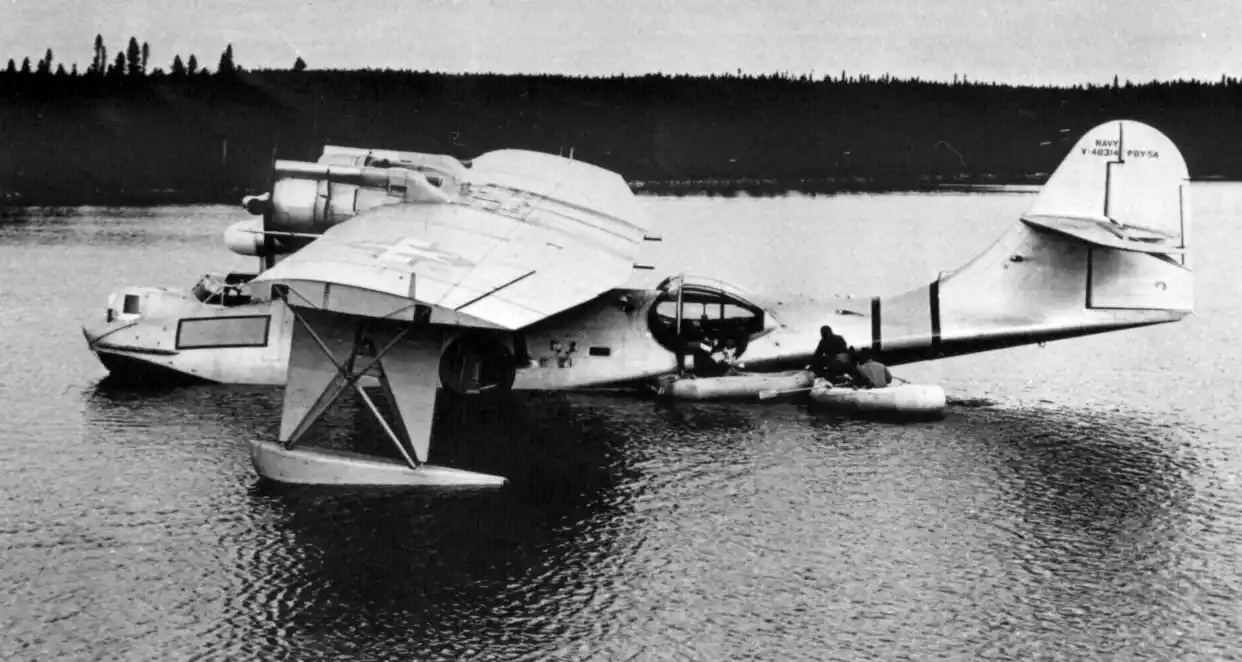
At the same time, word spread quickly of the crash survivors. In Argentia, Newfoundland, location of the U.S. Army’s Fort McAndrew and a Coast Guard Air Detachment, an Army Medical team was assembled and began planning for a rescue. Because the crash site was heavily wooded and located in a large bog known, as “muskeg,” aircraft could not land nearby. Instead, Coast Guard aircraft began dropping emergency supplies to the survivors in the early afternoon.
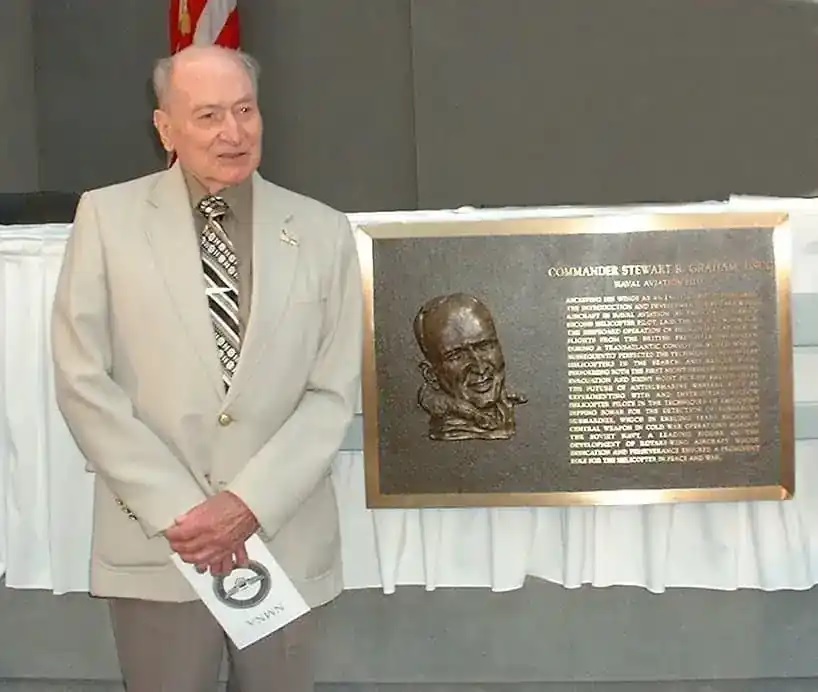
Later that day, the rescue team, led by Capt. Samuel Martin, a U.S. Army medical officer, was flown by one of the Catalinas to the lake closest to the crash site, about five miles away. From there, team members paddled down a small river in rubber boats as far as they could before slogging their way across the muskeg to the survivors and relieving the two hunters.
Assessing the geography and the survivors’ injuries—14 required stretchers—Martin quickly determined there was no way to evacuate them along the five-mile trek the rescue team had taken inbound. Word of the perilous situation was passed back to the air detachment and, onto the Coast Guard Eastern Area Rescue Officer, Capt. Richard Burke. Burke decided to use an emerging aviation technology, the helicopter, for the rescue.
The first mass produced helicopter was developed here in the United States—Igor Sikorsky’s 1942 R-4 “Hoverfly.” In September 1946, the Coast Guard possessed only two helicopters, both built by Sikorsky: the fabric covered HNS-1, a modified version of the R-4, at Air Station Elizabeth City, North Carolina; and the metal-skinned HOS-1 “Hoverfly II,” at Air Station Brooklyn, New York. Each was powered by a piston engine, rather than the gas turbines powering today’s helicopters.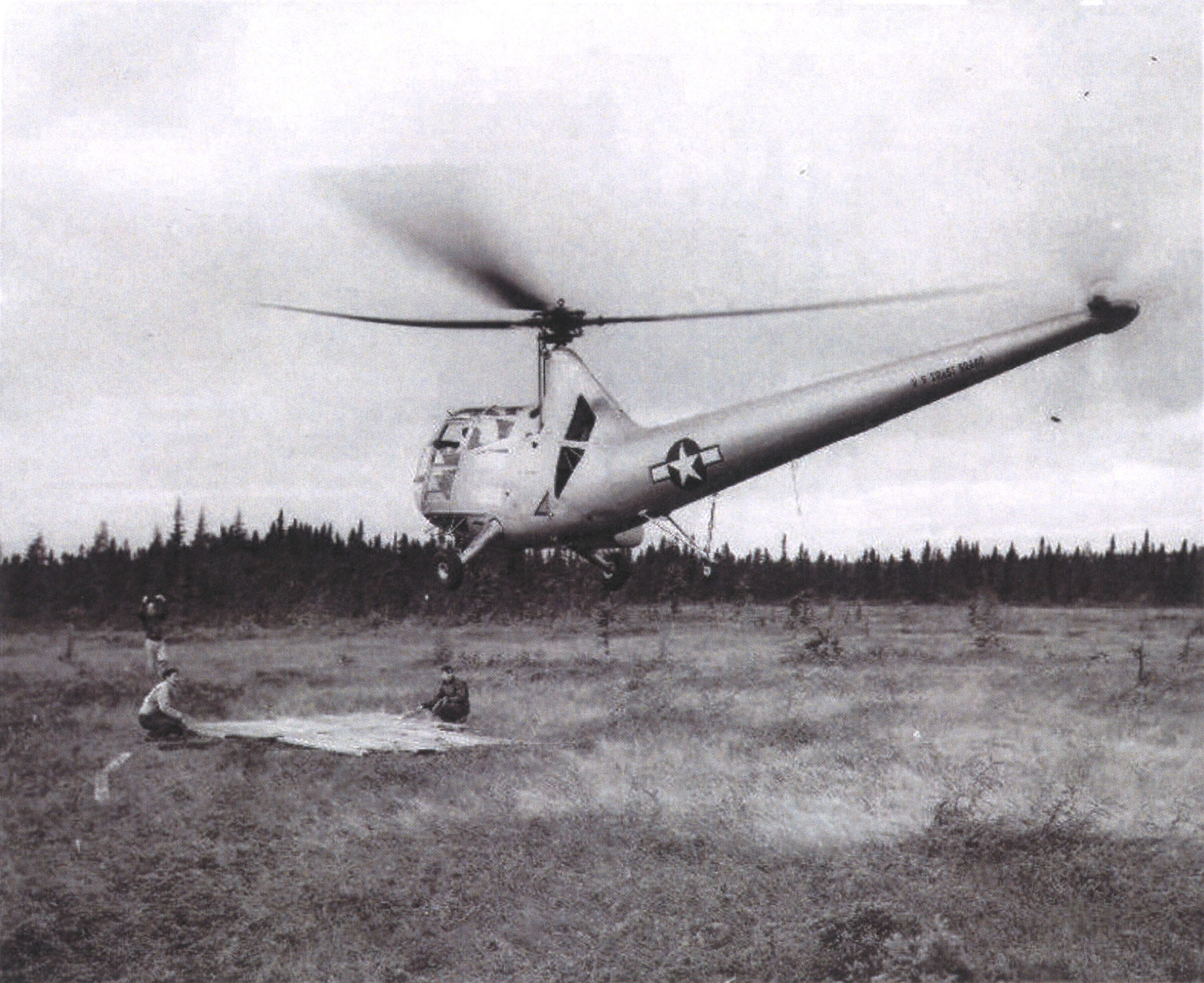
Since these early helicopters had very limited range, orders were given for the airframes to be disassembled for transport. The Coast Guard crews immediately undertook this complex and extremely unusual task to begin the rescue. U.S. Army Air Force C-54s, the military version of the DC-4, arrived at both Brooklyn and Elizabeth City in the early evening of the 20th. They were loaded with the helicopters and their crews and were on their way to Gander before midnight.
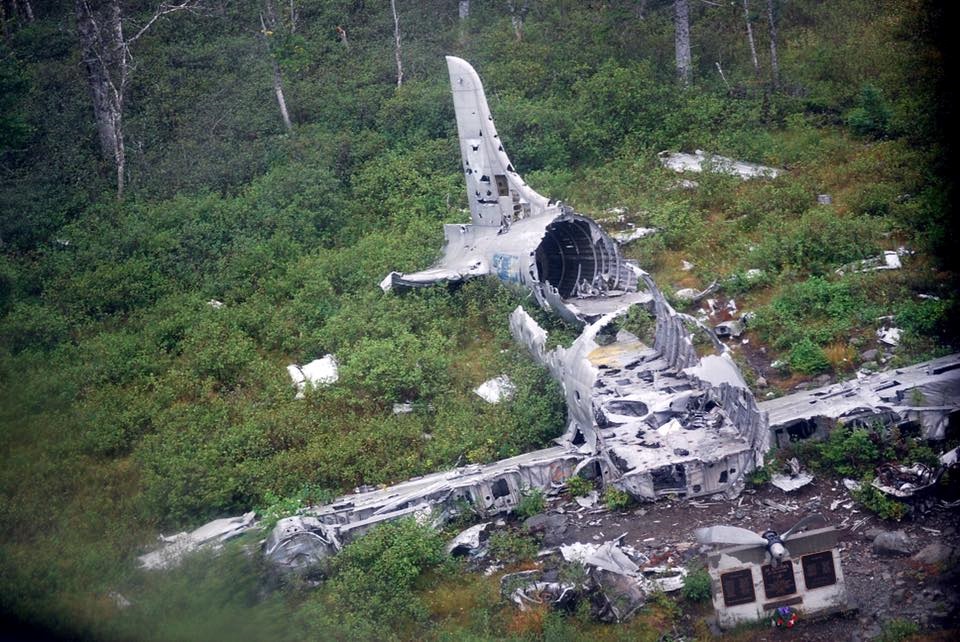
Upon arrival in Newfoundland, shortly after sunrise, the crews—under the command of Coast Guard Helicopter Pilot #1, Cmdr. Frank Erickson—immediately set to work on reassembling the helicopters. Realizing the challenges of landing a helicopter on the soft and unstable muskeg, the Argentia Coast Guard aircrews dropped lumber that same morning at the crash site to construct a landing platform. A second landing platform was also constructed at the edge of Gander Lake, about seven miles from the crash site, where the survivors could be brought to waiting Coast Guard Catalina amphibians for a short flight to Newfoundland airport and awaiting medical services.
To accommodate the injured survivors, Coast Guard technicians modified both helicopters to carry a Stokes litter. The Elizabeth City HNS carried the litter on the outside, and the Brooklyn HOS held the litter inside the fuselage. The crew of the HOS had it assembled and successfully test flown by the early afternoon, but the Elizabeth City HNS had to undergo troubleshooting and reassembly by the crew when problems were experienced in its initial test flights. On the 21st, thanks to the tireless efforts of the Coast Guardsmen, the HOS was able to evacuate the eight most critical patients before darkness set in. They included the severely injured Flight Attendant Rookx, who was reluctant to leave the passengers for whose care she felt strongly responsible. The HOS nearly sank into the mucky muskeg on its first flight, when it attempted to land on a stretched tarpaulin, because its wooden platform was under construction.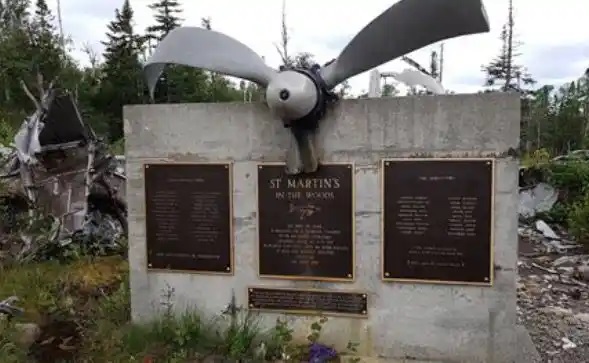
The next morning, both helicopters evacuated the remaining 10 survivors and spent the afternoon flying out Martin’s medical rescue team of 14. Although one of the survivors passed away from medical complications a few days later, this miraculous mission was in no way diminished. This first case of a helicopter evacuating civilians from a disaster scene had been completed in less than 48 hours from the initial notification. To reiterate, these Coast Guard pioneers effected the disassembly, transportation, and reassembly of the helicopters, as well as the safe transportation of over 30 people—one at a time—all in less than two days.
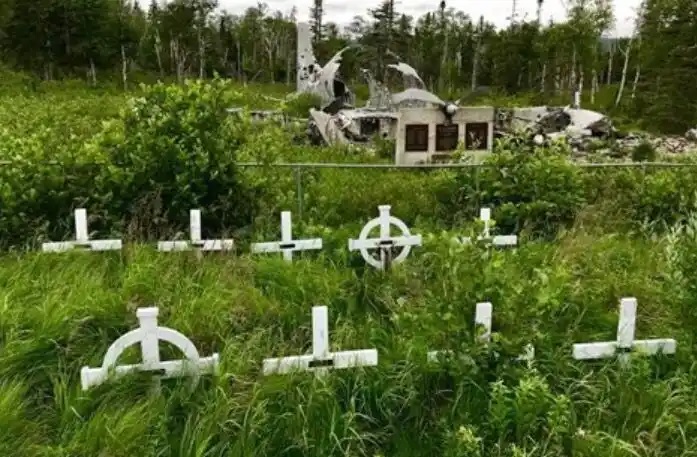
Admittedly, I spent my career in the Coast Guard completely unaware of the service’s contribution to this milestone in aviation history. However, in 2016, I had the opportunity to fly up to Gander with Vice Adm. Charlie Ray, at the time, the Coast Guard’s Deputy Commandant of Operations and “Ancient Albatross,”—to commemorate the 70th anniversary of the rescue. It turns out that the efforts of Captain Martin and Commander Erickson, and their teams, are well remembered in Newfoundland. Dozens of locals turned out to celebrate the rescue and thank the U.S. Coast Guard and U.S. Army. The mayor took the opportunity to name a street in Gander after Coast Guard pilot Cmdr. Stewart Graham, and another street after Army Capt. Samuel Martin. We then had the opportunity to overfly the crash site aboard a Royal Canadian Air Force CH-149 “Cormorant” – a very big helicopter. As a chaplain offered a prayer, a rescue swimmer was lowered to place a wreath at the small graveyard where the victims of the crash are buried. That graveyard has been named “St. Martin’s in the Woods,” in Martin’s honor. It was indeed a solemn day.

